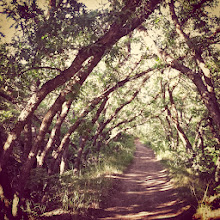
Early this morning we had a bright and full harvest moon, and on the first day of autumn!

I thought to commemorate the moment I would post on an illustrator I admire whose paintings often depict delicate branches of gold glowing leaves, and twinkling moonlit skies.



Are they not glorious scenes to behold? I first fell in love with Kinuko Y. Craft's work as a young girl; The Twelve Dancing Princesses was the name of the book, and I would check it out from the library as often as I could.



Craft's images are other-worldy and her subjects angelic. As a girl I would stare for hours trying to absorb every tiny, exquisite detail. They transported me to a another realm filled with magic and perfection.


Later, I obsessed over Craft's other illustrated books: Cinderella, Sleeping Beauty, and Pegasus.




Born in Japan in 1940, Craft graduated with her BFA from the Kanazawa College of Art, and then moved to the United States in 1964 where she continued studying at The School of the Art Institute of Chicago.

She continues to live and work in the United States today, and since the mid-'90s has been illustrator for children’s books, fantasy book jackets and posters. Her art has also been licensed on calendars, posters, greeting cards, and other consumer goods.

Craft has received numerous awards for her work, including several gold and silver medals from The Society of Illustrators in New York, and has collaborated with many authors including her husband, Mahlon F. Craft, whom she met while attending school in Chicago, and her daughter, Marie Charlotte Craft, who now resides in Edinburgh, Scotland. How richly diverse a family they are.

Her paintings are done with a combination of oils and watercolor on clay board gesso panels. Craft draws on her love of fine art and art history in creating her work, especially in taking inspiration from Leonardo Da Vinci, the Pre-Raphaelites and Symbolist painters.

I mentioned two posts earlier how much Craft's charming style reminded me of the delicate and flowery paintings of Pre-Raphaelite painter, Frank Bernard Dicksee. Well, here's the proof.
Dicksee

Craft

Dicksee

Craft

Craft's versions are much softer and more luminous than Dicksee's, however, and her gowns and hairstyles have a gravity-defying volume that add to their fairy-tale mystique.

Renaissance art also seems to be a major inspiration for Craft...
Unknown Venetian
Artist,(1525)

Craft

George Gower (1588)
The Armada Portrait


...as well as portraits of famous 18th and 19th Century Queens. :)
Martin Van Meytens (1767-68)
Marie Antoinette the Younger

Craft

Queen Victoria (1842)

Craft

In an age saturated with vector art, flash animations, photoshopped images, and other digital media, it's refreshing to sit down with a classic children's book that can be admired for its beauty and handcrafted skill. Craft's work will continue to stand out for its style, sublime detail, elegance, technical prowess, and for helping children today appreciate the aesthetics of times long past. Her images bring us all one step closer to realizing the visions hiding deep within our imaginations.
~S


























